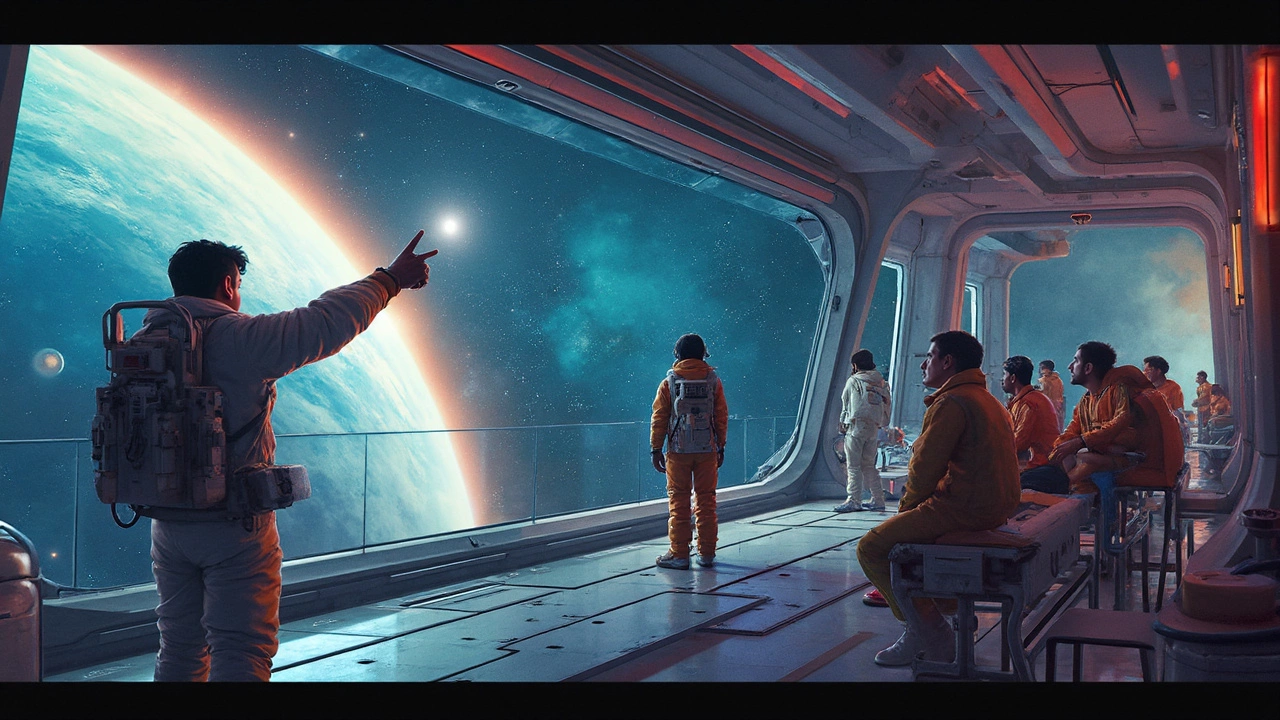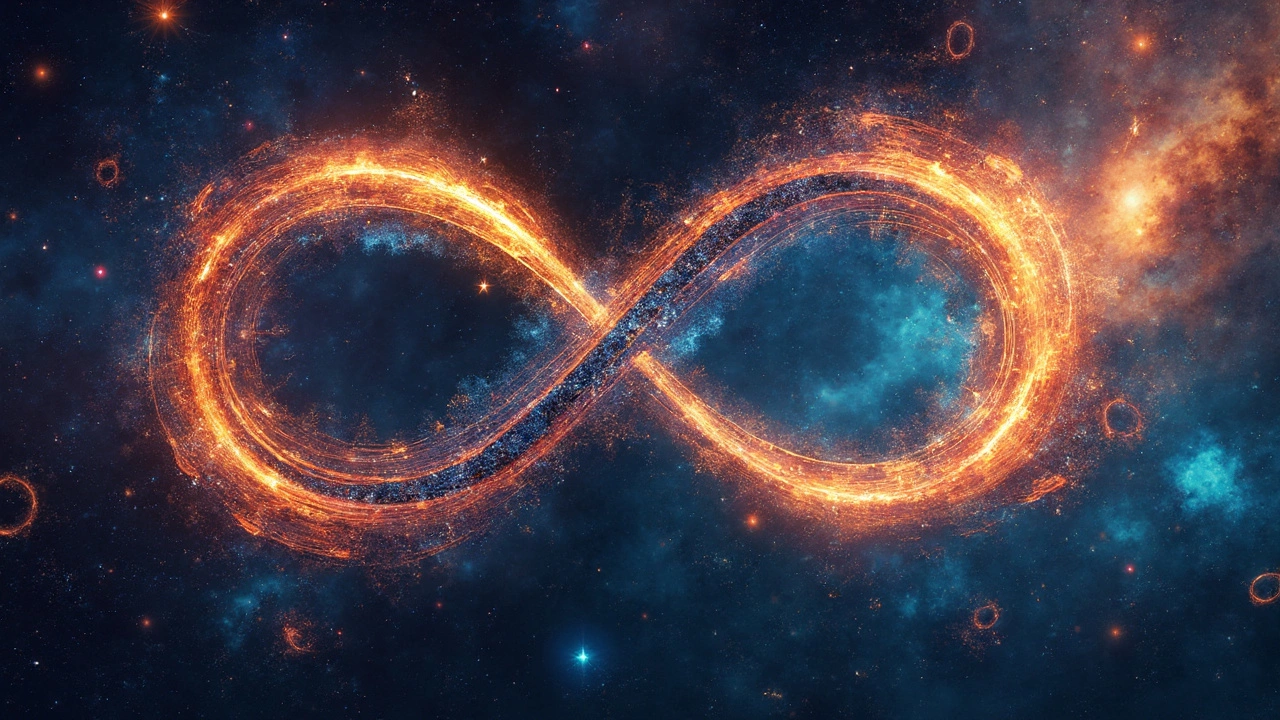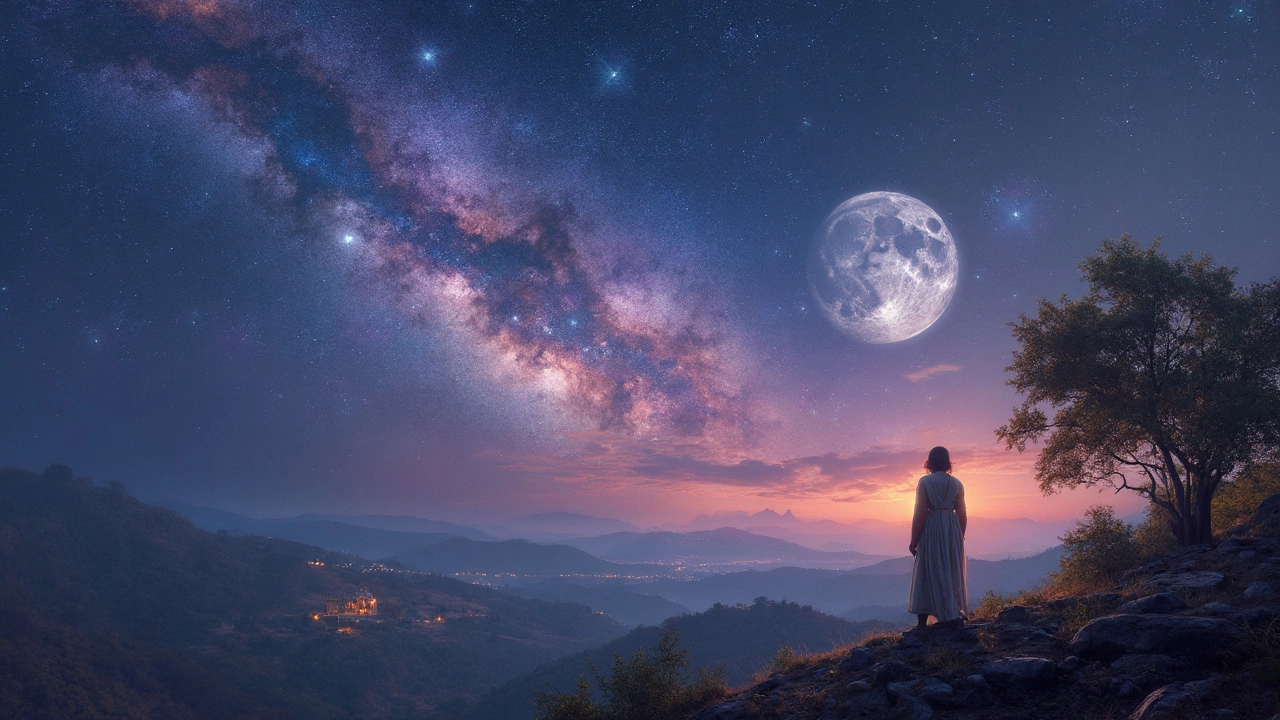Space feels like an endless expanse when you look up at the night sky. But is it really infinite, or does it just seem that way? This question digs deep into the very essence of the universe and our place in it.
Imagine standing on a beach, staring at the horizon. The ocean appears boundless, but you know there’s land on the other side. Space is a bit like that ocean—seemingly without end, yet possibly limited. Scientists are still trying to figure it out.
Some theories suggest that space could curve back on itself, like a giant spherical globe. This would mean traveling far enough in one direction could eventually bring you back to your starting point. Crazy, right?
Another mind-bending idea is that the universe is expanding constantly. It’s like blowing up a balloon; the surface keeps stretching, but does the balloon have an edge?
- The Cosmic Perspective
- Theoretical Boundaries
- Infinite Expansion
- Human Exploration Limits
- Paradoxes of the Vast Unknown
The Cosmic Perspective
Looking at space from our tiny planet can make you feel a bit small, can't it? With billions of stars in our galaxy alone, it's no wonder folks wonder if space is actually limitless. But to get some grasp on this mind-blowing concept, let's zoom out to the cosmic level.
First off, we know for sure that our universe is massive. Earth is just a speck in the Milky Way, which itself is one of countless galaxies. The light from some of these galaxies takes millions of years just to reach us!
The Observable Universe
When scientists talk about the universe, they often refer to the 'observable universe.' This is basically everything we can see or detect with our current technology. A lot of it is really far away, like 93 billion light-years across far. But it's called the observable universe because we can't see beyond it yet. It’s like having your hands tied when trying to explore a massive forest; you can only know what's visible at the moment.
An Expanding Universe
Here's a fun fact: the universe isn't just sitting there; it's expanding. Imagine dots on a balloon. As you blow up the balloon, the dots move farther apart. That's kinda what's happening in our universe. This expansion is one reason why 'unlimited' could be a fitting description of space, but it’s not exactly infinite.
Experts figure our universe has been expanding ever since the Big Bang. What's even more wild is that this expansion is accelerating, meaning galaxies are rushing away from each other faster and faster. So, who knows what we’ll be able to observe in the future?
While pondering if space itself is boundless, what’s clear is our human perspective is always growing. With every new telescope image, we discover more about this great unknown, pushing the boundaries of our understanding just a bit more.
Theoretical Boundaries
In the quest to understand if space is infinite, scientists have proposed several theories about its boundaries, or the lack thereof. These aren't just wild guesses but are backed up by real astrological observations and complex math.
Curved Space-Time
One popular theory involves curved space-time. It's rooted in Einstein's theory of general relativity, which tells us that massive objects can bend the fabric of space-time. If you scale this up, one suggestion is that space itself might be curved so much that it loops back on itself, like an enormous sphere. Think about walking in a straight line on Earth—you’ll eventually circle around to where you started.
Observable Universe
Another term you'll often hear is the 'observable universe,' which refers to the part of the universe we can see or measure. This extends about 46.5 billion light-years in any direction. But that's based on the limits of our technology and not necessarily the true edge of space.
Flat or Open Universe?
In contrast, there are theories suggesting that the universe could be flat or open, meaning it stretches out indefinitely in all directions. This notion is supported by measurements of the cosmic microwave background radiation, the afterglow of the Big Bang, which indicate that on a large scale, space is pretty flat.
| Theory | Key Concept |
|---|---|
| Curved Universe | Space-time loops back on itself. |
| Flat Universe | Expands infinitely in a flat plane. |
| Observable Universe | The portion of the universe we can see. |
While these ideas might be a bit mind-boggling, they help frame our understanding of space exploration and what could lie beyond. The truth is, we might not yet have the technology or insight to determine the full shape and size of the universe, but every new discovery adds a piece to the puzzle.

Infinite Expansion
So, what's all this talk about the universe expanding? Well, way back in 1929, an astronomer named Edwin Hubble made a pretty big discovery: the universe is growing. His idea was that galaxies are moving away from us, which sounds a bit like the ultimate cosmic farewell.
This expansion means the universe wasn't always this vast. Around 13.8 billion years ago, everything started with the Big Bang—a massive explosion that sent everything outwards. Imagine setting off a firework and watching it burst across the sky. The universe is still in that outward motion, just on a much grander scale.
What’s mind-blowing is that the rate of this expansion is accelerating. How do we know this? In the 1990s, scientists observed distant stars known as supernovae and found them moving faster than expected. It seems a mysterious force called dark energy is the culprit, making up about 68% of the universe. It might sound like science fiction, but it’s real stuff.
The Endless Growth
If space keeps expanding, does it ever run out of room? Not really. Think about blowing up a balloon that never pops. That’s what space exploration is dealing with—an ever-growing universe with new territory waiting to be discovered.
This means that the galaxies we see today might not be around forever. Over billions of years, they could slip away from our view as the space between us keeps growing. Don't worry—it’s not happening overnight.
Meanwhile, astronomers are scratching their heads over why this expansion keeps speeding up. Could it ever slow down, or is this our new normal? These are the big questions driving our understanding of the cosmos.
Human Exploration Limits
You might think we're pretty advanced with our space tech, sending rovers to Mars and astronauts to the International Space Station. But when it comes to venturing further into the universe, we've got some serious hurdles to jump. And they're not small.
The Distance Challenge
Here's the deal. Even with our fastest spacecraft, it would take us thousands of years just to leave our own solar system and reach even the nearest stars. Alpha Centauri, our closest neighbor, is over 4 light-years away. You’d need to understand that a light-year is how far light travels in a year—about 9.5 trillion kilometers (or around 6 trillion miles). That's a daunting distance.
Technological Constraints
Our current spacecraft technology is not just too slow, but also unable to sustain human life for extended journeys. Sure, space tourism is a hot topic, but living in space for years without resupply from Earth? Not feasible yet. We're working on advanced propulsion systems like ion drives and hypothetical concepts like warp drives. But let's face it, these are mostly sci-fi at this point.
The Human Element
Humans aren't exactly built for space either. Microgravity wreaks havoc on our bodies, causing muscle atrophy and bone loss. The lack of a breathable atmosphere, cosmic radiation, and isolation pose serious risks. We need breakthroughs in life support systems and protective habitats to keep astronauts safe over long periods.
Cost and Resources
Besides the scientific and human factors, there's the issue of money. Space exploration is expensive. Really expensive. Think billions of dollars just for a single mission. We need sustainable funding and international cooperation to tackle these challenges together. Otherwise, we'll be stuck dreaming about the stars instead of visiting them.
So, while the idea of exploring the infinite wonders of space is thrilling, space exploration realities keep us closer to home for now. But who knows what the future holds? Maybe one day, those school field trips will include a stop at the rings of Saturn.

Paradoxes of the Vast Unknown
When it comes to exploring the universe, we bump into some pretty baffling paradoxes. These aren't the kind of riddles you'd solve with a casual thought; they force scientists to rethink everything they know about space. One famous paradox is the 'Olbers' Paradox.' If the universe is infinite and filled with stars, why is the night sky dark? Shouldn't it be bright, lit up by countless stars?
Curvature and Infinite Expansion
Another head-scratcher is how space itself can be both boundless and expanding. This suggests that while space has no edge, it's also getting bigger. Think about that: space is creating more of itself all the time. It's a tricky concept that challenges our everyday understanding of 'infinite.'
The Boundary Dilemma
Then there's the idea that if space has boundaries, what lies beyond them? Theories range from parallel universes to completely unknown dimensions, leading to considerable debates in astrophysics. However, nobody really knows yet, making it a giant mystery box in space exploration.
| Paradox | Question |
|---|---|
| Olbers' Paradox | Why is the night sky dark if the universe is full of stars? |
| Infinite Expansion | How can space keep growing yet remain infinite? |
| Boundary Dilemma | What exists beyond space's potential boundaries? |
Exploring these paradoxes doesn't just stretch our imagination; it may have huge implications for future human space exploration. Solving them could open up new ways to understand the universe, perhaps even making distant travel more conceivable.




